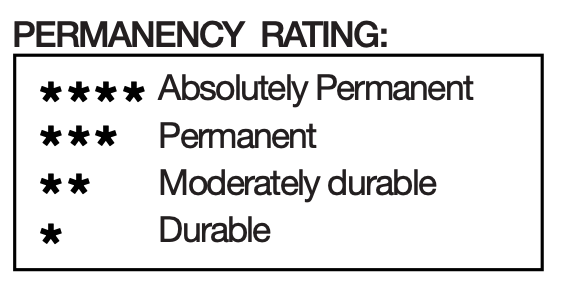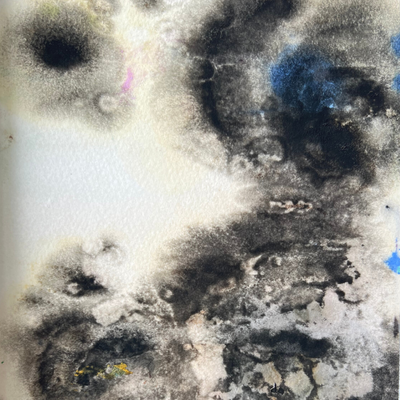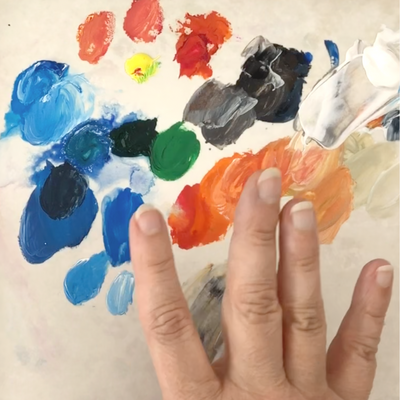Gouache and lightfastness: how to choose pigments that won’t fade
One important factor to consider when using gouache is lightfastness, or the ability of a pigment to resist fading or discoloration when exposed to light. Gouache is a water-based paint similar to watercolor, but it has a higher pigment concentration and is typically more opaque. It is often used for creating illustrations, designing graphics, and painting in a style similar to oil or acrylic.
This is especially important for artists who want their work to be long-lasting and sellable. To choose pigments that won’t fade over time—as most gouache colors will do without proper protection from UV radiation and other light sources—it’s essential to consider the lightfastness of your chosen hues. If you’re only painting in sketchbooks, this is not something to worry about.
Table of Contents
What is lightfastness?
Lightfastness measures a pigment’s resistance to fading or discoloration when exposed to light. It is essential to consider lightfastness when choosing pigments for any artwork, including gouache paintings.
Several factors can affect the lightfastness of a pigment, like the type of pigment itself and the conditions in which the artwork is displayed. For example, pigments more prone to fading may fade more quickly when displayed in a sunny location or a room with high humidity.
It’s important to note that even pigments with high lightfastness ratings can fade over time if exposed to excessive light or other damaging conditions. However, using pigments with high lightfastness ratings can help to minimize fading and ensure the longevity of your artwork.

Choosing lightfast gouache pigments
There are several ways to find the lightfastness rating of a particular gouache pigment:
- Check the product label or packaging: Many gouache manufacturers will include the lightfastness rating of their pigments on the label or packaging. There is no standard here, unfortunately. You should learn how to read a gouache label.
- Consult a color chart or swatch book: Many art supply companies publish color charts or swatch books that list the lightfastness ratings of their pigments.
- Look online: Some websites and online retailers provide information on the lightfastness ratings of specific gouache pigments.
You can also run a test by yourself: paint swatches of your gouache colors and apply opaque cardboard on half of the swatches. Tape your swatches on a window facing the sun, and check the results after 6 or 9 months. You can see an example of Holbein and Himi lightfast test in our Facebook group: Gouache Painters.
When selecting pigments for your artwork, choose from reputable manufacturers, as they tend to use high-quality lightfast pigments. Additionally, look for pigment brands with a high lightfastness rating—these are more likely to retain their color through time.

Lightfastness and color
The relationship between lightfastness and color is essential when choosing gouache pigments. Pigments with high lightfastness ratings tend to have more subdued or muted colors, while pigments with lower lightfastness ratings may be more vibrant or intense. Pinks are famous for fading very quickly, and my favorite color, Opera pink, is so fugitive that it can vanish in a couple of months.
This can be challenging for artists who want to achieve bright, bold colors in their artwork, as these colors often use pigments with lower lightfastness ratings. However, there are ways to achieve the desired colors while still using pigments with high lightfastness ratings.
One option is to mix different pigments to create the desired color. You can mix lightfast and non-lightfast pigments, but a higher proportion of lightfast pigments can help increase the mixture’s overall lightfastness.
Another option is to use lightfast pigments as an underpainting or base layer and then add layers of non-lightfast pigments on top to achieve the desired color. This can help preserve the artwork’s overall lightfastness while allowing for more vibrant colors.
It’s important to remember that even when using high lightfastness pigments, it’s still crucial to protect your artwork from excessive light exposure and other damaging conditions to ensure its longevity.
Conclusion
In conclusion, lightfastness is an essential factor to consider when choosing gouache pigments, as it can affect the longevity of the artwork. By choosing pigments with high lightfastness ratings, artists can help to ensure that their work will not fade or discolor over time.
There are several ways to find the lightfastness rating of a particular pigment, including checking the product label or packaging, consulting a color chart or swatch book, or looking online. It’s also a good idea to purchase from reputable brands and to look for pigments with high lightfastness ratings.
While the relationship between lightfastness and color can be challenging, there are ways to achieve the desired colors while still using high lightfastness pigments, such as mixing different pigments or using lightfast pigments as underpainting.
Overall, by considering lightfastness when choosing gouache pigments, artists can help ensure their artwork’s longevity and durability. And if you want to protect your gouache paintings from fading, here are some tips.






